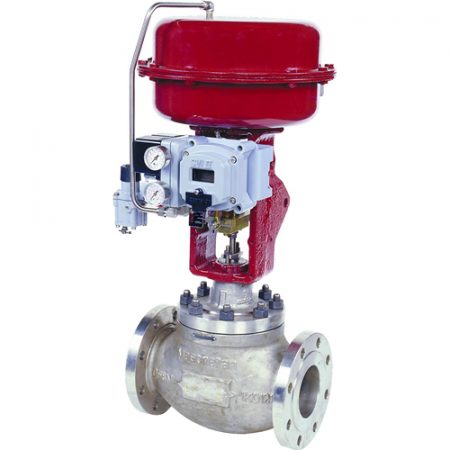Enhancing Operational Efficiency with Advanced Control Valves
Enhancing Operational Efficiency with Advanced Control Valves
Blog Article

Maximize Power Savings and Comfort With Advanced Building Automation Controls
In the world of modern design and facility administration, the assimilation of sophisticated structure automation regulates stands as an essential development. By taking advantage of the power of automation, buildings can adapt, react, and evolve in means that were once inconceivable.
Power Effectiveness Conveniences
Power performance benefits can considerably lower power usage and operational costs in structures. Energy-efficient systems, such as innovative building automation controls, can optimize the usage of sources like illumination, cooling, and home heating, leading to lower energy expenditures over time.
In addition, improved power performance can extend the life expectancy of building tools and systems. By operating extra successfully, HVAC systems, lighting fixtures, and various other structure elements experience less deterioration, resulting in lowered maintenance and substitute expenses. Additionally, energy-efficient structures often regulate higher residential or commercial property worths and rental rates, giving lasting monetary advantages to owners.
Furthermore, power effectiveness can boost resident convenience and efficiency. Correctly managed indoor atmospheres with optimum illumination and thermal conditions develop a more positive and conducive work space, resulting in boosted employee contentment and performance. Generally, the power efficiency advantages related to sophisticated structure automation controls are complex, including price savings, ecological stewardship, and owner well-being.
Enhanced Comfort Control
Enhancing convenience control in building environments requires an advanced combination of sophisticated automation systems for ideal resident health. By utilizing advanced structure automation controls, centers can tailor the indoor atmosphere to satisfy the particular needs and choices of occupants. control valves.
Improved comfort control surpasses standard temperature level modifications. It includes attributes such as personalized setups, occupancy sensors, and all-natural light application to develop a receptive and dynamic environment. By integrating these innovative controls, structures can not only boost convenience however also boost energy performance by enhancing system operations based on actual tenancy and usage patterns. Inevitably, focusing on resident convenience through innovative automation systems results in an extra delightful and healthier interior environment.
Functional Performance Improvements

Furthermore, the application of real-time monitoring and analytics devices makes it possible for building drivers to determine energy ineffectiveness and operational abnormalities promptly. By constantly monitoring energy usage patterns and system performance metrics, changes can be made in real-time to enhance energy usage and guarantee peak functional effectiveness. control valves. In check it out addition, integrating demand action techniques into structure automation controls can even more enhance functional effectiveness by dynamically changing power use based upon grid conditions and pricing signals
Indoor Environment Optimization
Efficient interior environment optimization is an essential facet of structure automation controls, making sure occupants' convenience and health while maximizing power financial savings. By using innovative sensing units and controls, developing automation systems can continually monitor and adjust temperature, moisture degrees, air quality, and ventilation to produce an optimal interior environment. Maintaining constant and comfortable problems not only enhances occupant complete satisfaction however also improves productivity and total wellness.
Interior climate optimization likewise plays a crucial function in power performance. By fine-tuning air flow, air conditioning, and home heating systems based on real-time information and tenancy patterns, developing automation controls can substantially decrease energy intake - control pop over to this site valves. As an example, implementing strategies such as demand-controlled air flow and thermal zoning can assist lessen energy waste while guaranteeing that each area of the building receives the required conditioning.

Lasting Environment Development
Building automation manages not only optimize interior climate problems for energy efficiency and occupant convenience but likewise lay the foundation for producing a sustainable atmosphere with critical management of systems and resources. By integrating innovative building automation innovations, such as sensing units, actuators, and smart software program, centers can adjust and keep an eye on power usage in real-time to reduce waste and reduce their carbon footprint. These systems make it possible for predictive maintenance, recognizing possible concerns before they intensify and maximizing tools efficiency to boost longevity and performance.
Additionally, sustainable environment production prolongs past power monitoring to include water preservation, waste reduction, and indoor air top quality improvement. Structure automation controls can control water usage, identify leakages, and ensure correct garbage disposal methods, adding to general sustainability efforts. Furthermore, by keeping an eye on and managing air flow and purification systems, these modern technologies improve owner health and performance while decreasing energy intake connected with HVAC procedures.
Final Thought
To conclude, advanced structure automation controls deal substantial advantages in regards to energy savings, convenience control, functional performance, interior environment optimization, and creating a sustainable setting. By implementing these controls, structures can accomplish optimal performance while decreasing power intake and improving passenger convenience. It appears that the use of sophisticated automation modern technology is crucial in enhancing structure efficiency and creating a much more sustainable future.
Power performance benefits can considerably lower energy consumption and operational expenses in buildings. In general, the power effectiveness benefits connected with innovative building automation controls are multifaceted, including expense savings, environmental stewardship, and passenger well-being.
In addition, including need reaction approaches right into building automation controls can even more improve operational effectiveness by dynamically changing power use based on grid conditions and pricing signals.
Structure automation controls not only optimize interior environment conditions for Recommended Site power efficiency and occupant comfort but also lay the structure for producing a sustainable setting via tactical administration of systems and sources.In conclusion, progressed building automation regulates deal considerable benefits in terms of energy savings, comfort control, operational efficiency, indoor climate optimization, and creating a lasting environment.
Report this page